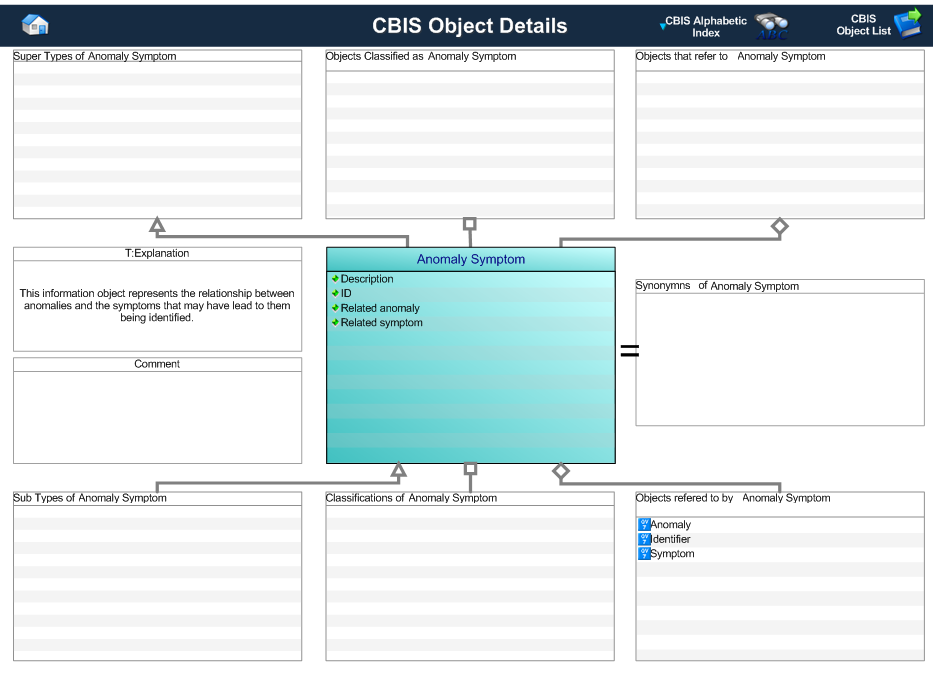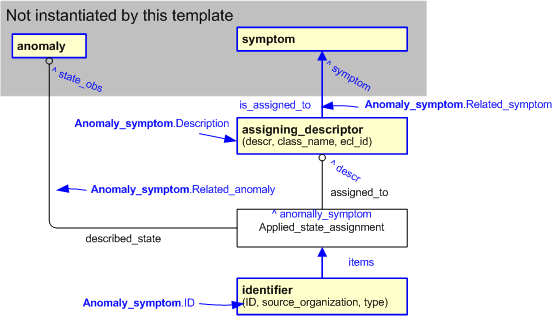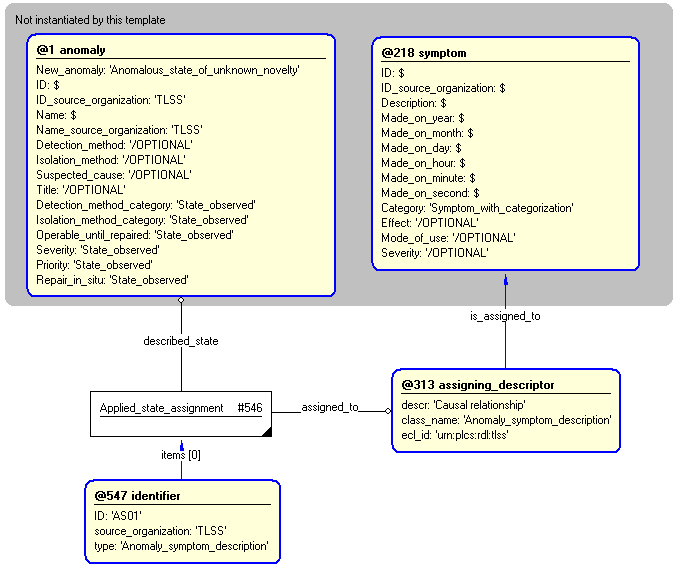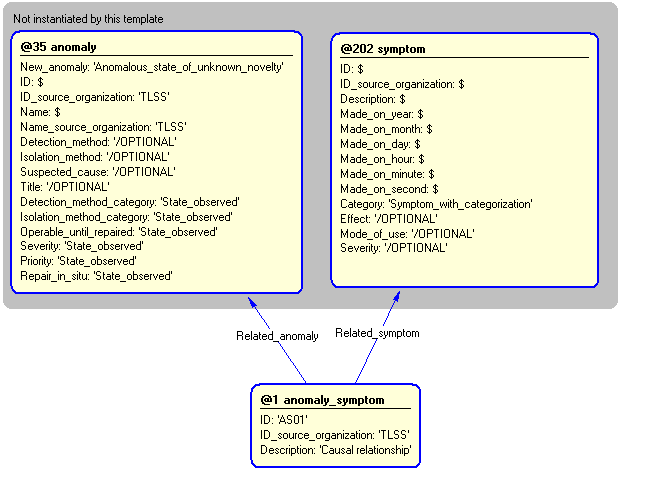Template:— anomaly_symptom (anom_rel)
Context:— UK_Defence |
Date: 2009/04/17 10:11:53
Revision: 1.2
|
This section specifies the template anomaly_symptom.
NOTE
The template has been defined in the context of
UK_Defence.
Refer to the business context for details of related templates.
NOTE
An explanation of a template and the associated instantiation path is
provided in the
Template overview
section.
This template describes how to represent the relationship between anomalies and the symptoms that may have lead to them being
identified
The anomaly_symptom business object is used by those UK_Defence Data Exchange
Specifications that require information about the relationships between anomalies and the symptoms that lead to them
being identified.
Figure 1 — Graphical Representation for Business Object Anomaly Symptom
Observation:
The definition of an Anomaly Symptom object is:
Data about the relationships between anomalies and the symptoms that lead to them being identified.
|
Attribute name
|
Attribute description
|
Attribute type
|
Optionality
|
| Description |
This is the description of the Anomaly Symptom. |
Intrinsic |
Mandatory (1:1) |
| ID |
This is the Identifier of the Anomaly Symptom. |
Identifier |
Mandatory (1:1) |
| Related anomaly |
This is the reference to the Anomaly that is related to the Symptom. |
Anomaly |
Mandatory (1:1) |
| Related symptom |
This is the reference to the Symptom that is related to the Anomaly. |
Symptom |
Mandatory (1:1) |
Table 1 — Anomaly Symptom attribute details
The EXPRESS-G diagram in
Figure
2
shows the templates and EXPRESS entities that are required
to represent the template
"anomaly_symptom".
The text highlighted in blue shows the template parameters.
Figure 2 — An EXPRESS-G representation of the Information model for anomaly_symptom
The graphic for the template to be used in other EXPRESS-G diagrams
is shown in Figure
3
below.
Figure 3 — The graphical representation of the anomaly_symptom template
The following input parameters are defined for this template:
The anomaly_symptom identifier.
The identifier of the organization responsible for the anomaly_symptom identifier.
The description of the anomaly_symptom.
The anomaly that is related to the symptom.
The symptom that is related to the anomaly.
The following reference parameters are defined for this template:
%^target = $anomaly_symptom.anomaly_symptom%
The instantiation path shown below specifies the entities that are to be
instantiated by the template.
A description of templates and the syntax for the instantiation path is
provided in the
Templates Help/Information section.
The instance diagram in Figure
4
shows an example of the EXPRESS entities and templates that are instantiated by the template:
/anomaly_symptom(ID='AS01', ID_source_organization='UK_Defence', Description='Causal_relationship')/
(an illustration of the consolidated anomaly_symptom template is shown in
Figure
5 below.)
Figure 4 — Entities instantiated by anomaly_symptom template
The instance diagram in
Figure
5
shows the graphic symbol for the template that is to be
used in other instance diagrams. The example template is:
/anomaly_symptom(ID='AS01', ID_source_organization='UK_Defence', Description='Causal_relationship')/
Figure 5 — Instantiation of anomaly_symptom template
Characterizations
No common characterizations of the template
anomaly_symptom
have been identified. However, the ISO 10303-239 EXPRESS model
may enable other assignments to the entities instantiated by the template.




